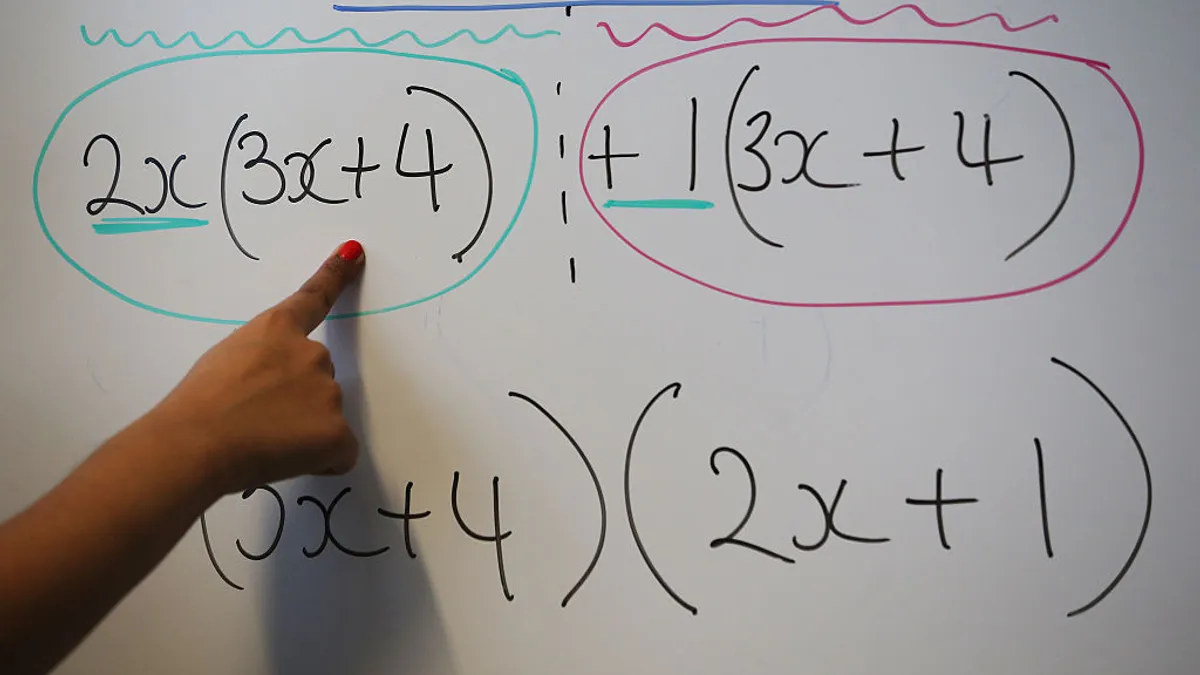Anna Bargagliotti is chair of the National Council of Teachers of Mathematics/American Statistical Association Joint Committee on K-12 Curriculum on Statistics and Probability Education. Hollylynne S. Lee is distinguished professor of mathematics and statistics education at North Carolina State University College of Education and senior faculty fellow at Friday Institute for Educational Innovation.
Recent national and global events have reinforced the impact of statistics on our lives.
Should masks be mandatory for public gatherings? Should the purchase of a new computer include an extended warranty? From issues of public health to personal finance, statistical literacy is essential. Our ability to assess the data presented to us is vital for effectively dealing with uncertainty and making decisions.
Sound statistical analysis has been in the spotlight especially throughout the COVID pandemic, guiding our understanding of the threat of this virus and our ongoing efforts for recovery. It has never been more important to be able to navigate data, determine its legitimacy, and understand its biases.
To build this skill set among today’s students, the field of statistics must find a prominent and integrated position within our nation's pre-K-12 academic curricula.
A focus on statistics education
Currently, statistics is included in mathematics standards and often minimally emphasized on state assessments. Yet, an understanding of statistics is essential for careers in the digital economy and for navigating everyday life.
A curriculum designed for statistical literacy must be based on the statistical problem-solving process outlined in the American Statistical Association’s Pre-K–12 Guidelines for Assessment and Instruction in Statistics Education II (GAISE II). It must support an understanding of data in context, multivariate thinking and curation of complex, real data sets.
In lesson planning, there is a temptation to put the focus on formulas for principles, such as assessing confidence intervals or evaluating risk. But this approach encourages rote memorization over deep interpretation and separates the discipline from its breadth of practical applications.
Not every student will need to know how to produce, curate or analyze data, but every student will be a consumer of data. The ability to assess the data presented to us, determine its legitimacy, and identify the ways in which the presentation of data can impact interpretation are fundamental skills to navigating the modern world. Statistics touches almost every part of our lives, and, for that reason, it should be prominent throughout the curriculum.
What educators need
Educators are often ill-equipped to teach statistical literacy across subjects. These limitations are due both to the educational structure and the way we prepare our educators.
Educators often earn their degrees with minimal exposure to statistics. Without experiencing statistics as a student, educators often struggle to construct active, engaging statistics lessons for their classrooms that are based on the statistical investigative process.
To lead students toward meaningful statistical literacy, an educator must be comfortable with interpretation and argumentation within a given data set and context. This requires a complex understanding that allows a comfort level with gray areas within the discourse. For this, educators need resources and support.
Fortunately, these resources exist. For example, the American Statistical Association and National Council of Teachers of Mathematics Joint Committee on K-12 Curriculum on Statistics and Probability Education supports a professional learning community for educators to build and practice these skills, including through use of test lesson plans.
ASA also offers competitions for students that can give educators frameworks for lessons in statistics, such as a Data Visualization Poster Competition and its "This is Statistics" fall and spring contests, which connect statistics to real-world hot topics.
The Concord Consortium is also doing good work in this area, with an emphasis on an integrated approach to STEM and resources to help teachers bring statistics literacy to their classrooms. Through the online professional development programs of the Friday Institute for Educational Innovation at North Carolina State University, teachers from across the U.S., and indeed around the world, have been learning about teaching statistics through a data-centric approach.
Many similar programs are available to educators who become members of professional learning communities.
Another option is collaboration. Educators can — and should — work across subject matters to make connections between disciplines. Indeed, in many ways, this mimics what real statisticians do in their work.
A year of silver linings for statistical literacy
Though the past year has been rife with challenges, it has left us at the cusp of an opportunity for increased statistical literacy. The pandemic has put the relevance of statistics front and center as the world hungered for meaningful data on transmission and mortality.
Statistics tracked our journey through the ups and downs of the virus’ spread and measured the impact as vaccines were implemented. While we maintained social distance, people used data to track their steps, their moods and their overall well-being.
Meanwhile, remote learning led to more technology in the hands of more students than ever — along with access to tools that enabled them to engage with data on a deeper level. These are promising strides for the future growth of statistical literacy in the curriculum.
Statistics is a necessary literacy to navigate life and act as responsible citizens. Education that provides today’s students with this crucial skill begins with a curriculum that appropriately equips our educators and integrates statistics across subjects.




















